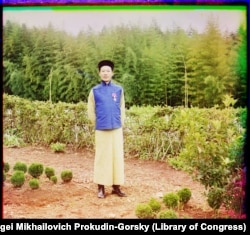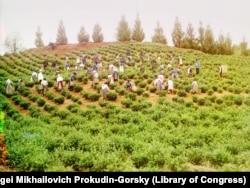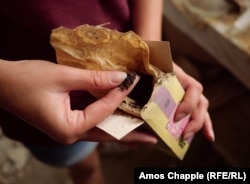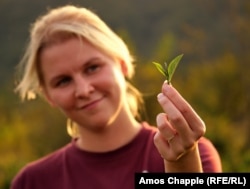In this photo taken more than 100 years ago, Lao Jin Jao poses proudly on his plantation in western Georgia -- then part of the Russian Empire.
Lao was famous. A few years earlier, the Chinese-born migrant had stunned the world when his tea, grown and produced on Georgia’s Black Sea coast, won a gold medal at the Paris World Expo in 1900.
It was a colossal achievement for a region that had only planted its first tea bushes as an experiment in 1845.
The humid climate of western Georgia proved just warm enough to sustain tea bushes, but chilly nights and lengthy winters meant the plants grew slower than their sun-drenched cousins in the tropics.
It was this slow growth that gave the tips of Georgia’s tea bushes a uniquely sweet, mellow flavor. The hills of western Georgia were best suited to producing small amounts of high-end tea.
But after the chaos that followed the 1917 Bolshevik Revolution, the Georgian economy collapsed, and many tea bushes were torn out to make way for corn and other urgently needed food crops.
In the late 1920s, after Georgia was forcefully folded into the Soviet Union, the Kremlin turned its eye towards Georgia’s moribund tea fields. Both Josef Stalin -- and Vladimir Lenin before him -- were keen tea drinkers.
High quality tea is produced by hand-plucking the tender top two leaves and bud of the plant -- then slowly processing and drying them. But Soviet planners wanted maximum tonnage and cared little for the subtleties of flavor.
Communist authorities sped up the drying process and hoped to mechanize the picking by planting rows of tea, then developed harvesting machines that worked like hedge-trimmers. The resulting clippings were notoriously awful, with tough old leaves and twigs tossed together with the precious tips. Even Soviet propaganda was coy about the machines’ abilities, describing them as “…firstlings and far from perfect, but work on their designs is continuing.”
But the Kremlin’s dreams of massive tea harvests began to be realized. By the 1980s, the Georgian Soviet Socialist Republic was among the world’s top five tea producers -- at least in terms of weight -- and supplied 95 percent of all tea in the Soviet Union. The industry fully or partly employed nearly 180,000 people.
But in 1991 it all began to collapse. The breakup of the Soviet Union meant the end of a guaranteed market for Georgia’s tea farmers, and the poor quality of the product at the time meant it couldn’t compete on the free market against even decent, cheap tea from Asia.
And Georgians had other things on their minds as a civil war and separatist conflicts raged across their newly independent country. Throughout the 1990s tea factories were abandoned and their machinery sold off -- often as scrap metal. By 2014, Georgia’s tea production was just 1,800 tons -- a nearly 99 percent drop from the industry’s peak of 152,000 tons in 1985.
In the hills of western Georgia today swathes of old tea plantations have been overtaken by ferns and other wild plants. But the tea bushes are hardy enough to have survived the past three decades amidst the tangle of wild forest.
A recent government program to help finance the revival of Georgia’s once prestigious industry has helped rehabilitate more than 1,000 hectares -- around five times the area of Monaco -- of abandoned plantations by stripping back overgrowth to clear the way for the Soviet and tsarist-era tea bushes.
Miina Saak is one of a group of friends from Estonia and Lithuania who left corporate jobs at home and moved to Georgia “to work with our hands again.” Saak and her friends founded Renegade Tea Estate, taking advantage of Georgian government assistance in setting up their rented plantation.
Saak says the Georgian tea industry has seen a slight uptick in production from the low point in 2014, and there are now up to 3,000 tons produced per year.
And the Estonian says the industry has a very specific reason to be optimistic about further growth. Unlike in the tropics, where tea plants are regularly sprayed with pesticides, in Georgia it’s relatively easy to produce organic tea. “There are no natural enemies for the tea plant here because the winters kill the pests and bacteria,” she says.
Saak says her company has tried to crack the massive Russian tea market, but “the memories of Georgian tea are so terrible that [Russian people] don’t want to hear anything about it anymore.”
Instead, the market for high-end organic tea from Georgia is now mostly in Northern Europe and the United States. But it is hoped the brand can recapture its former glory as successfully as Georgia’s post-Soviet wines. Saak says the future lies in a focus on quality over quantity, and Georgian tea producers “need to go back to the roots of the industry."















